I’ve written about the benefits of stretching your sense of yourself outward, freeing it from the repetitive, stagnant “now” of addiction, extending it all the way from a distant but familiar past to a wished-for future. But how can we turn this abstract idea into an exercise, a therapeutic method, for recovery, for whatever you want to call the next stage?
I’ve been thinking vaguely about a workshop I’m to give in Australia this July. So I ask myself: what on earth do I have to offer front-line workers in addiction? What can I suggest that’s concrete enough to help real people struggling with addiction in the here and now? Well an idea finally came to me while I was meditating this morning. I do sometimes get good ideas while meditating. I’m no expert meditator by the way, and I know you’re not really supposed to be thinking things through. But sometimes new perspectives just appear, and I value them.
So here it is:
What if, either alone, maybe in a guided meditation context, or maybe in psychotherapy with an expert, what if the cravings, the fondness, the attraction of getting high kind of slid down a slide of time, from the present to the past. After all, those cravings don’t really belong in the present tense, that’s not their home. They come from long ago. From the dark oppressive helplessness that followed something awful, some period of abuse or chaos. They come from a depression that started when you were a teen. Well, didn’t they? I know mine did. And they show up in the present, in the now, in the “should I or not?” of today, as stubborn visitors. They continue to visit you in the present. Like unwelcome guests, they don’t leave when it’s time for them to go, even though they’re taking up half the house.
So imagine the whole continuum of your life as though it were a slide or a slope. Let those desires slide backward in time, and follow them, observe them, see where they land in the past, see where they really belong, like an observer on an archeological expedition. When I try that exercise, I get a rush of self-compassion and self-understanding, and, as a bonus, present-tense cravings pack their belongings and clear out.

It’s like an overcast sky when the clouds start to part and little bits of sun filter through. And then you realize there’s a whole blue sky waiting on the other side of the clouds.*
Then continue the metaphor: imagine the slope of your life continuing upward, rising, unfurling, as it opens into the future. That future really is different from the past — and the present. This is not an abstraction. It’s a completely different place, a place you’ve never been to, but a place that sends tendrils of possibility, rays of hope, back to you, now, in the present, where you’re sitting wondering about and yearning toward freedom and change.
Maybe a better image is that of a cone…maybe an ice-cream cone. After all, there’s only so much mileage you get from a shoe horn. Maybe picture an ice-cream cone and let all the slush gravitate to the bottom, which invariably starts to leak. So the goo leaks out the soggy bottom, and what’s left on top is…I don’t know, the good stuff, the untasted  flavours? The chocolate sprinkles?
flavours? The chocolate sprinkles?
Maybe a snow-cone?
I can’t quite find the right image. Any ideas would be appreciated. It would be nice to develop this metaphor so that I could actually talk about it, elaborate it, teach it. Here’s another image that might work better, because you can see the “bad stuff” emitting downward and out the bottom while the “good stuff,” the possible future, radiates from the mouth of the cone.
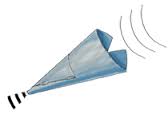
Try it and see what you think. For me, this is unfinished business, a rough draft. But I’m sure there’s a palpable feeling to letting the present-tense sludge slide back into the past, where it really belongs, and then…then, I don’t know, the sky’s the limit.
*I got this metaphor from “Andy,” the guide for the Headspace meditation app. I think Headspace is fabulous. Try it!
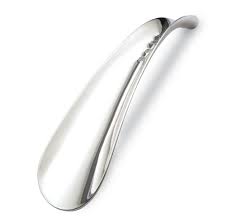

 Choices are based on appraisals (interpretations) of situations. People with addictions choose whether to get high or abstain based on appraisals of the quality of the high, the consequences of indulging, the proximity of other people who might approve or disapprove, and so forth. Since our appraisals are determined by factors outside our volition or awareness, especially in a complex situation changing moment by moment, the choice we make in that situation is less determined by our volition and more determined by luck and circumstance.
Choices are based on appraisals (interpretations) of situations. People with addictions choose whether to get high or abstain based on appraisals of the quality of the high, the consequences of indulging, the proximity of other people who might approve or disapprove, and so forth. Since our appraisals are determined by factors outside our volition or awareness, especially in a complex situation changing moment by moment, the choice we make in that situation is less determined by our volition and more determined by luck and circumstance.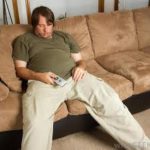 Appraisals are also strongly affected by internal variables: mood states, present emotions, beliefs, (biased) recollections of previous events. But this list doesn’t yet scratch the surface. There is my sense of emptiness and dislocation at this moment, compared with how I think I’ll feel after getting high, compared with how much drug I possess or can afford, in the context of building excitement and/or building anxiety and shame. These “internal state variables,” as psychologists call them, are highly complex and they change from moment to moment. Since that mix of factors will certainly affect one’s choice (e.g., to use or abstain), I can’t see how the choice can be entirely voluntary, entirely an expression of “free will.”
Appraisals are also strongly affected by internal variables: mood states, present emotions, beliefs, (biased) recollections of previous events. But this list doesn’t yet scratch the surface. There is my sense of emptiness and dislocation at this moment, compared with how I think I’ll feel after getting high, compared with how much drug I possess or can afford, in the context of building excitement and/or building anxiety and shame. These “internal state variables,” as psychologists call them, are highly complex and they change from moment to moment. Since that mix of factors will certainly affect one’s choice (e.g., to use or abstain), I can’t see how the choice can be entirely voluntary, entirely an expression of “free will.”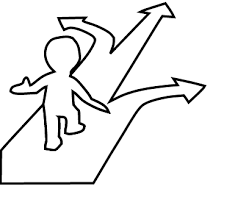 cannot suddenly be imported into a system that has none. Changes in appraisal, emotion, and social factors strongly influence volition, which influences actions, all of which alters one’s belief in oneself — one’s self-efficacy. That’s why self-talk and help from other people
cannot suddenly be imported into a system that has none. Changes in appraisal, emotion, and social factors strongly influence volition, which influences actions, all of which alters one’s belief in oneself — one’s self-efficacy. That’s why self-talk and help from other people  (friends, partners, books, stories, podcasts) can be so important. Once addicts tune into the possibility of volitional choices, the mechanism underlying volition itself grows in strength and availability.
(friends, partners, books, stories, podcasts) can be so important. Once addicts tune into the possibility of volitional choices, the mechanism underlying volition itself grows in strength and availability. is available during the impulsive phase of addiction, as one’s imagined future slides down a sort of chute into the “now”? Some, I think, but not much. Once the compulsive stage of addiction is reached, how much volition is present? Now action is put in motion before one is even aware of making a choice. Still, compulsion is not abnormal or pathological. When we examine more mundane decisions, like whether to check that the stove is turned off, it’s clear that volition and compulsion mix together, competing and cooperating, as we make choices. It’s not mandatory to recheck the stove.
is available during the impulsive phase of addiction, as one’s imagined future slides down a sort of chute into the “now”? Some, I think, but not much. Once the compulsive stage of addiction is reached, how much volition is present? Now action is put in motion before one is even aware of making a choice. Still, compulsion is not abnormal or pathological. When we examine more mundane decisions, like whether to check that the stove is turned off, it’s clear that volition and compulsion mix together, competing and cooperating, as we make choices. It’s not mandatory to recheck the stove.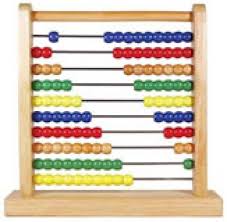
 commentaries, and half a year later the total came to 15 — shock! — many from well-known researchers and journalists, including Kent Berridge, George Ainslie, Maia Szalavitz, and Sally Satel. The punchline for me was that I had to write replies to each of these commentaries, to be printed along with them in the journal. And let me tell you, these were sculpted pieces of academic writing — some of them many pages in length — so I’ve had to sweat blood to reply to them. And I’ve still got more than half left to do.
commentaries, and half a year later the total came to 15 — shock! — many from well-known researchers and journalists, including Kent Berridge, George Ainslie, Maia Szalavitz, and Sally Satel. The punchline for me was that I had to write replies to each of these commentaries, to be printed along with them in the journal. And let me tell you, these were sculpted pieces of academic writing — some of them many pages in length — so I’ve had to sweat blood to reply to them. And I’ve still got more than half left to do. lumping them all together. So, he said, it’s a good thing that the DSM has dropped “addiction” (almost) from its vocabulary. Just like the phrase “nervous breakdowns” has disappeared from the popular lexicon: it’s about time we got rid of the outmoded term “addiction.” The culprit, for him, is imprecision. Addiction is an imprecise term, and worse, it brings with it “many problematic accretions and connotations” — no doubt he means accusations of blame, self-indulgence, moral decay, and the resultant stigmatization of addicts.
lumping them all together. So, he said, it’s a good thing that the DSM has dropped “addiction” (almost) from its vocabulary. Just like the phrase “nervous breakdowns” has disappeared from the popular lexicon: it’s about time we got rid of the outmoded term “addiction.” The culprit, for him, is imprecision. Addiction is an imprecise term, and worse, it brings with it “many problematic accretions and connotations” — no doubt he means accusations of blame, self-indulgence, moral decay, and the resultant stigmatization of addicts.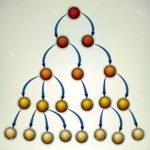 So Flanagan replaces the word “phenomenon” with “phenomena.” But what are these distinct entities? To me this is like trying to describe and differentiate the various species included under the label “birds” — so that we can do away with the term “bird” altogether. Is that a good idea?
So Flanagan replaces the word “phenomenon” with “phenomena.” But what are these distinct entities? To me this is like trying to describe and differentiate the various species included under the label “birds” — so that we can do away with the term “bird” altogether. Is that a good idea? people who get addicted to meth have tended to feel an absence of power, or commitment, or
people who get addicted to meth have tended to feel an absence of power, or commitment, or  relevance in their lives. They are most bothered by the flatness of their existence. Whereas people attracted to opiates (like me) are fundamentally afraid of losing warmth, acceptance, and connection with other people. We grow up feeling unsafe because we are hyper-aware of our aloneness, and the soothing quality of opiates eases the hurt.
relevance in their lives. They are most bothered by the flatness of their existence. Whereas people attracted to opiates (like me) are fundamentally afraid of losing warmth, acceptance, and connection with other people. We grow up feeling unsafe because we are hyper-aware of our aloneness, and the soothing quality of opiates eases the hurt. As for the term “addiction,” I don’t think replacing it with “substance use disorder” is going to get rid of the “many problematic accretions and connotations” Flanagan worries about. That kind of modernization of terminology doesn’t seem to help alienated or marginalized groups. For example, replacing “retarded” with “delayed” never erased the stigmatization of people who can’t think as quickly as others. So in this case, let’s not throw out the baby or the bathwater. Let’s continue to explore how all addictions embody fundamental changes in how we think, feel and act. But let’s also try to clarify how those changes take different forms, leading to different outcomes, for different people.
As for the term “addiction,” I don’t think replacing it with “substance use disorder” is going to get rid of the “many problematic accretions and connotations” Flanagan worries about. That kind of modernization of terminology doesn’t seem to help alienated or marginalized groups. For example, replacing “retarded” with “delayed” never erased the stigmatization of people who can’t think as quickly as others. So in this case, let’s not throw out the baby or the bathwater. Let’s continue to explore how all addictions embody fundamental changes in how we think, feel and act. But let’s also try to clarify how those changes take different forms, leading to different outcomes, for different people.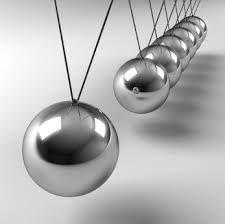
 Johann Hari, as revisited in
Johann Hari, as revisited in  So those are a few of the headline topics that we can deal with this year. And there are others. With Trump in the US,
So those are a few of the headline topics that we can deal with this year. And there are others. With Trump in the US,  What is going on in terms of the international pendulum swing between draconian repressive approaches and the ever-more-
What is going on in terms of the international pendulum swing between draconian repressive approaches and the ever-more- enlightened drug policies of countries (like the UK, Canada, and Australia) where people are stepping away from the “brain disease” model and the nasty habit of throwing addicts in jail? Cannabis will soon be legal throughout both Canada and the US! And it seems they’re
enlightened drug policies of countries (like the UK, Canada, and Australia) where people are stepping away from the “brain disease” model and the nasty habit of throwing addicts in jail? Cannabis will soon be legal throughout both Canada and the US! And it seems they’re 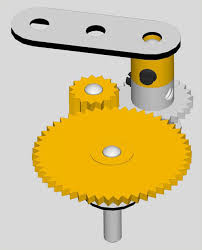
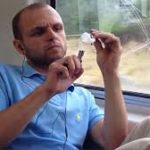 per day. Sleep became sporadic and unpredictable. He could no longer think in straight lines, and fantastical whims soon replaced his customary rationality. His business fell apart, he moved in with his dealer, and his precious relationship with his young daughter turned into a parody of parenting, with him sneaking out to the car every hour or two for another hit. Meth comes on strong and brings with it clarity, optimism and brilliant energy. But Brian’s sleep loss meant that the high was increasingly short-lived. With the first hints of loss, he would grab for his pipe, eager beyond reason for another launch.
per day. Sleep became sporadic and unpredictable. He could no longer think in straight lines, and fantastical whims soon replaced his customary rationality. His business fell apart, he moved in with his dealer, and his precious relationship with his young daughter turned into a parody of parenting, with him sneaking out to the car every hour or two for another hit. Meth comes on strong and brings with it clarity, optimism and brilliant energy. But Brian’s sleep loss meant that the high was increasingly short-lived. With the first hints of loss, he would grab for his pipe, eager beyond reason for another launch. Other (interconnected) feedback loops facilitate and consolidate addiction. They include social isolation, reinforced by the addiction, which leaves the addict with fewer opportunities to reconnect with people, or with healthier pleasures. They include the rationalizations that addicts know too well: if I’m such a bad person, or so misunderstood, then I might as well do it again. Brian was a self-reflective guy; he knew how much he had lost. His ongoing self-destruction seemed a punishment for what he perceived as his failure.
Other (interconnected) feedback loops facilitate and consolidate addiction. They include social isolation, reinforced by the addiction, which leaves the addict with fewer opportunities to reconnect with people, or with healthier pleasures. They include the rationalizations that addicts know too well: if I’m such a bad person, or so misunderstood, then I might as well do it again. Brian was a self-reflective guy; he knew how much he had lost. His ongoing self-destruction seemed a punishment for what he perceived as his failure.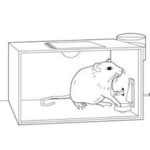 According to classical learning theory, rewarded behaviours proliferate, while behaviours leading to adverse consequences are extinguished. Yet this clearly misses the point when it comes to the development of emotional problems. Rather, it sometimes seems that the most
According to classical learning theory, rewarded behaviours proliferate, while behaviours leading to adverse consequences are extinguished. Yet this clearly misses the point when it comes to the development of emotional problems. Rather, it sometimes seems that the most  unpleasant conditions are the most likely to become entrenched. Mental and emotional states characterized by suffering appear in adolescent development with remarkable frequency, and they continue to dominate the personality for years if not for life. Why would such negative states become attractors, become concretized and stuck?
unpleasant conditions are the most likely to become entrenched. Mental and emotional states characterized by suffering appear in adolescent development with remarkable frequency, and they continue to dominate the personality for years if not for life. Why would such negative states become attractors, become concretized and stuck?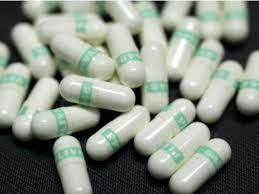 ineffective. (
ineffective. (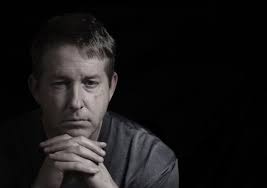 more fault we see; and so rejection, sadness, and shame are amplified. Anxiety draws attention to threat. That is its evolutionary purpose. Thus anxiety disorders arise from a very simple, very pernicious feedback cycle. The more anxiety, the more attention to what could go wrong, to the dangers implicit in the environment. In turn, this thinking amplifies the feeling of anxiety. And so on.
more fault we see; and so rejection, sadness, and shame are amplified. Anxiety draws attention to threat. That is its evolutionary purpose. Thus anxiety disorders arise from a very simple, very pernicious feedback cycle. The more anxiety, the more attention to what could go wrong, to the dangers implicit in the environment. In turn, this thinking amplifies the feeling of anxiety. And so on.